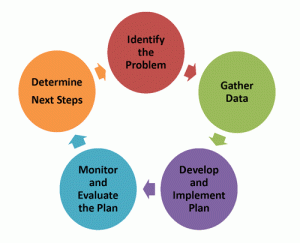We make hundreds of decisions every day. Many of them are relatively small, like which TV show to watch or what outfit to wear. Many of our decisions will be forgotten by the next morning, but some decisions can be the difference between life and death. At one point, everyone will face the occasional decision, which will have consequences for months or years into the future. Some decisions can drastically change the course of our lives such as what career path we choose or where we choose to move. These decisions are clearly not to be taken lightly. The easiest way to ensure that you are deciding well at every turn is to organize your decision-making process.
- Write down the problem at hand clearly and concisely.
- Depending on what your problem is, this step will be different, but some ways to gather data could be to do research on the topic, to do mathematical calculations to compare possible results (weigh out the benefits and limitations of the decision), or to ask a friend for advice.
- Once you have the information you need, you can create Pros/Cons charts, flow charts, or something similar to help you visualize your options. Using these resources, decide which course of action you think will have the best overall result. Then, enact your plan.
- During the various steps of your plan, watch how your actions are affecting you and those around you. After the plan has been completed, reflect on your initial decisions, reviewing for possible errors and decide if there are ways to improve in the future.
- Decide if steps that were not part of your initial plan need to be taken either to help reach the objective you originally wanted or for damage control.
